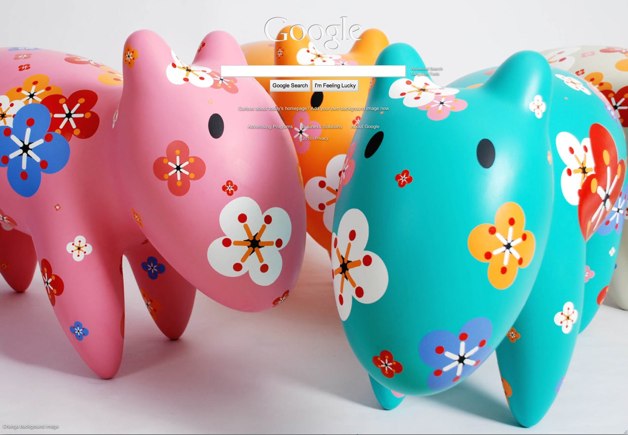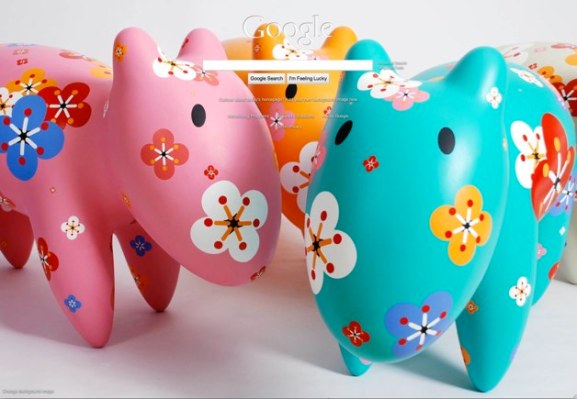
Last night, Google decided to temporarily abandon the principles behind its famously spartan homepage in favor of something a little different: a background image, which has been a design element present on rival search engine Bing since it launched. Users predictably went nuts as their clean, bare homepages suddenly featured flowery hippo things and other colorful photographs. Countless tweets have complained about the images, and our story last night racked up over 200 comments. “Remove google background” is currently the fifth highest trending topic on Google.
Now Google has apparently decided that imposing a background image on users wasn’t such a good idea after all, and they’ve turned off their experiment around ten hours early according to a tweet from Marrisa Mayer, Google’s Vice President of Search Product and User Experience. Users that visit the Google homepage are now shown the normal design, along with a link that says “Curious about today’s homepage? Add your own background image now”.
According to a post published on its official blog last night, Google was planning to rotate some professional photographs on its homepage over the course of 24 hours, with plans to return it back to normal once that timeframe ended. The trial was obviously meant to promote a new feature Google released last week that allows users to add their own background images, the difference here being that all users were temporarily being given a background image whether they wanted it or not.
Update: Google has updated its blog post to explain why they cut this short. They’re blaming it on a “bug” that failed to display an explanatory link:
We had planned to run an explanation of the showcase alongside it—in the form of a link on our homepage. Due to a bug, the explanatory link did not appear for most users. As a result, many people thought we had permanently changed our homepage, so we decided to stop today’s series early. We appreciate your feedback and patience as we experiment and iterate

